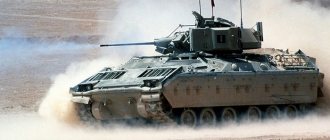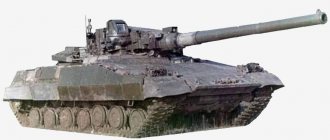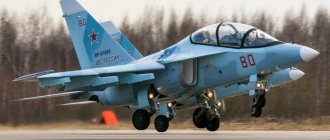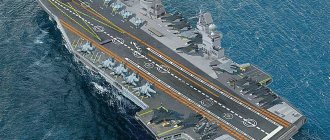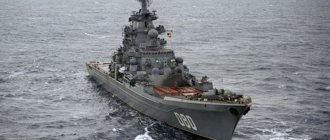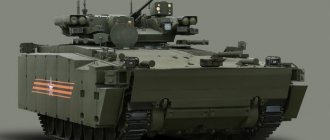The American triad of strategic nuclear forces (strategic nuclear forces) mainly consists of equipment that is old not only morally, but also physically: after the collapse of the USSR, not only was there no talk of obtaining funding for the creation of new systems, but for reasons of economy it was necessary to write off some more recent ones, but complexes are expensive to operate.
Among the typical “veterans” we can highlight the LGM-30G “Minuteman III” silo-based solid-propellant ICBM, which is the only representative of the ground component of the US strategic nuclear forces today. The current fleet of 400 deployed and some spare Minuteman IIIs are remnants of missiles produced and deployed between 1970 and 1977. Thus, the youngest of the American ICBMs in service will be 44 years old this year - the low-ranking officers at the underground launch control consoles almost certainly were not born when their missile was already in the silo. In late 2022, the Air Force's 91st Missile Wing shared its "family" story: 26 years apart, a mother and daughter turned the keys during test launches.
Of course, the missiles have been modernized over more than half a century of service. When it became clear in the late 1990s that the Minuteman III would remain in service for a long time, fuel replacement programs were initiated (in the case of solid rockets, “refueling” is a long process of carefully “picking out” the filling from the rocket and driving in new fuel, it took 15 years for the entire fleet), the guidance system, the power plant of the breeding unit, the equipment of control points, etc.
The most notable modernization program was somewhat reminiscent of a downgrade: by 2014, all missiles were re-equipped with one warhead instead of the original three. First of all, this was done for reasons of optimizing the structure of the American strategic nuclear forces: the ground component was required to have a large number of carriers, and with several warheads they would “eat up” the entire limit of charges under the New START Treaty, leaving nothing for the Trident II submarine-launched missiles (SLBMs). " The latter were already forced to “shrink” from a maximum of 8/14 warheads (with medium W88 or light W76 charges, respectively) to 4.4 on average in the arsenal.
An additional argument in favor of equipping the Minuteman III with monoblock warheads was to reinforce the position on the destabilizing role of “multi-headed” ICBMs. Without delving into this somewhat extraneous topic for the current conversation, their main “sin” is placing a large number of “eggs”/warheads at once in one vulnerable, but at the same time high-precision “basket,” which provokes a use-it-approach in a crisis situation. or-lose-it (“Use it or lose it”) and contradicts the basic principle of maintaining strategic stability - the disadvantage of starting a nuclear war. (The “use it or lose it” principle in this case means that the owner of heavy ICBMs in a crisis situation may decide to attack, recognizing their power and vulnerability, without waiting for the enemy to strike them - a strike that the enemy might not want to deliver. Awareness of this formulas by both opponents can drive them into war only out of the desire to “preempt the enemy, who would otherwise forestall my desire to forestall him”).
In addition, as a result of re-equipment of missiles with a smaller number of warheads, the cost of their maintenance decreased, it became possible to strengthen the complex of missile defense penetration systems, and part of the fleet was equipped with Mk. 21 from retired Peacekeeper ICBMs, which have better performance and likely higher accuracy and better ability to hit buried targets.
The long-awaited change
However, it is obvious that the past modernization and service life extension programs will not last long. The GBSD (Ground Based Strategic Deterrent) program was the result of the study of various options for the future ground component of the nuclear triad, these assessments have been carried out slowly since the beginning of the century. The GBSD index first appeared in the defense budget for the 2013 fiscal year and initially implied analytical work to select the optimal solution from many alternatives (including extending the operation of the Minuteman III until 2075, abandoning ICBMs, mobile missile systems, etc.) .
In the summer of 2014, a “hybrid” plan was announced - to install new missiles in existing silos and use, albeit radically modernizing, the existing communications infrastructure, launch control, etc. At the same time, the missile will probably have similar, but somewhat smaller dimensions than the Minuteman III and will definitely be solid fuel. An interesting challenge for American designers may be, judging by the available information, the remaining requirement to provide for the possibility of deploying the missile on mobile launchers. The Minuteman III was lighter and smaller than the Topol, so the GBSD would have transportable dimensions in any case. However, before this, not a single ground-mobile ICBM project had been implemented in the United States, and the National Defense Authorization Act (NDAA, 2020) contains a ban (until 2024) on financing the development of such a complex. It is noteworthy that the Trump administration criticized the introduction of this ban for ten years at once, because in the distant planning horizon, American missile submarines may become vulnerable, and the land component will have to be made a “survivable” component of the triad.
Of the three main participants in the ongoing competition, Lockheed Martin withdrew first and almost voluntarily, declaring that it would cooperate extensively with the winner. In August 2017, teams led by Boeing and Northrop Grumman received contracts for the detailed development of projects. Two years later, Boeing announced that it would refuse further participation in the program if the government did not interfere with Northrop Grumman’s plans to acquire a virtual monopoly in the production of solid rocket boosters of the required class - Orbital ATK. The Air Force refused to follow the lead of the Seattle company and stopped providing them with funds. Further serious efforts to get politicians to stop "single-source government procurement" (which was apparently Boeing's main plan) failed, and in December 2022 the Air Force formally declared victory for Northrop Grumman.
Since the 2022 financial year, truly serious funding has begun - $552.4 million. In the current 2022 financial year. already $1.5 billion this year, for 2022 it is planned to request $2.5 billion, then $3 billion for three years in a row. The total cost of the program is estimated at $93.1 - 95.8 billion (most of the amount is the production of 659 missiles, including 25 for initial tests, and the rest to maintain a group of 400 deployed, taking into account regular test and warranty launches) plus $14.8 billion will be spent on W87-1 warheads.
The likely date for achieving initial operational readiness, with the first nine missiles put on duty, has been announced as 2031 (the desired date is 2029); the Minuteman III GBSD should be completely replaced in the late 2030s. The probable index of the future rocket is LGM-182A; a proper name has not yet been assigned. In light of the existence of the Russian Avangard complex, the type of GBSD warhead is, of course, of particular interest. Evidence of the American side's attention to planning warheads for ICBMs periodically comes across, but it is obvious that, at least at the first stage, the combat equipment of the GBSD will be classic “cones” (and will almost certainly be monoblock): the Americans are currently pursuing a complex program to develop an analogue of the Russian glider there is neither time nor free funds.
However, many believe that there are no funds available for GBSD at all.
Balance issues
What does this launch mean for the global strategic balance of power? Much. Stationed, say, in Poland and the Baltic states, American MRBMs will be able to keep almost the entire European part of Russia at gunpoint. This will seriously disrupt the existing balance of power, which is largely based on the ability of the Russian armed forces to limit/deny the access and maneuver of NATO forces on its territory. Russia will be forced to respond by deploying similar missiles on its own, which, in turn, will affect the defense capability of Western Europe.
IRBM reach with a range of 1500 km in Eastern Europe and from Okinawa
However, it seems more likely that the Americans are primarily interested in the deployment of ballistic missiles in the Far East. China, not bound by the short- and medium-range missiles treaty, created an impressive ballistic arsenal in the first decade of the 21st century, clearly threatening both American military bases and US allies in the region. And Russia too, by the way.
This military advantage of the PRC seriously upsets the balance of power in the region. And new American missiles deployed in Okinawa and Japan can restore it. Thus, if in Europe the deployment of missiles will have a rather destabilizing nature, then in the Far East, on the contrary, it can serve as a stabilizing factor.
Reset instead of successor
Nuclear weapons in the United States do not have a sacred status that is obvious to Russians after the end of the Cold War. Rather, it is a “suitcase without a handle”: you can’t throw it away like a superpower, and it’s a pity to spend money. The result of the almost complete cost cutting was that in thirty years the only new types of nuclear weapons that came into service were the low-volume conversion of the B61 tactical aerial bombs into the unsuccessful concrete-piercing modification B61-11 and the low-yield W76-2 warhead for the Trident II SLBM (actually the regular W76 -1 with ballast instead of the second stage providing the main power), more complex and expensive systems to operate were written off, and the nuclear industry degraded so much that it is now difficult to even restore the ability to produce new thermonuclear ammunition.
This attitude is due to the fact that since the 1990s the United States has made little connection between its nuclear status and its military status in the world, rightly believing that it is ensured primarily by qualitative and sometimes quantitative superiority in conventional weapons. At the same time, for Russia, the nuclear status was the last defense of sovereignty and the straw of great power, to which even that political elite, for whom modern patriots do not have a kind word, did not stop clinging even in the poorest and most difficult years. Thanks to this, the nuclear sector was preserved, and delivery systems, newer than those in service in the United States, are now being replaced as obsolete by our standards. The idea that strategic nuclear forces could have a low priority compared to other types of troops seems completely insane in Russia.
It is not surprising that the American expert community, which for the most part is strongly anti-nuclear (and this is not necessarily a good-hearted pacifism: if all nuclear weapons disappear in the world, the relative military power of the United States will obviously increase), chose the land component of the triad as the main target of their attacks. Bombers are regularly used in conventional conflicts and are sometimes indispensable, although the program to develop a new aircraft strategic cruise missile, LRSO, sometimes suffers too. Missile submarines are inviolable, since they are supposedly the stabilizing component of the triad, the least vulnerable and optimized for a deep retaliatory strike: they try not to notice the possibility of a rapid attack from flat trajectories from the seas close to the enemy, as well as the fact that the traditional problem with the low accuracy of SLBMs compared to ICBMs, it seems they have already decided.
And here’s another great reason: an expensive element of the nuclear arsenal renewal program, which is so unpleasant for the “disarmamentists,” is becoming a land-based ICBM, which is harmful in itself. What arguments do opponents of GBSD and silo ICBMs use most often?
- vulnerability, coupled with the highest speed of response to a launch order, leads to the use-it-or-lose-it principle. Thus, silo ICBMs stimulate a retaliatory or pre-emptive strike, which may turn out to be erroneous. By comparison, missile submarines launch missiles after a longer period of time after receiving an order and are invulnerable to enemy ICBMs, so there is no point in rushing with a command. Bombers may also be withdrawn;
- the threat of nuclear war has decreased significantly compared to the time of the confrontation with the USSR, and spending on modernization of strategic nuclear forces needs to be reduced, and instead spend more either on non-military areas, or at least on conventional weapons, cyber weapons, etc.;
- public opinion is against GBSD.
As for the argument based on public opinion, numerous surveys are published to support it, but sometimes the desired result is achieved, as often happens, by the correct wording of the question in the questionnaire or the interpretation of the results. Thus, in a highly critical review of the Federation of American Scientists (Public Perspectives on the US Intercontinental Ballistic Missile Force, January 2021), on the one hand, they seemed to have arrived at the “needed” result: for example, only 26% of Americans fully supported GBSD, but on another issue of spending ICBMs were outshone in support for the purchase of conventional weapons and even deliberately populist responses such as investments in education and transport infrastructure.
There are often proposals, if not to reduce ICBMs completely, then to suspend the GBSD program and extend the service life of the Minuteman III again, while simultaneously conducting active negotiations on the reduction of nuclear weapons, especially concentrating on this type. Thus, if the number of ICBMs in the new structure of the strategic nuclear forces is at least reduced, then it will be possible to resort to “cannibalism” to maintain the readiness of the remaining ones. The disarmamentists are supported by the left “young” wing of the Democratic Party (proclaimed “progressive” by loyal media), which wants greater social spending and investments in “green” energy.
Conclusions?
In the near future, however, nothing threatens the existing balance of power. The 2022 National Defense Spending Plan, approved by the US Congress, explicitly prohibits the acquisition and deployment of short- and medium-range combat missiles. Funds are allocated only for research and testing. So we shouldn’t expect an immediate worsening of the situation in Europe and the Far East—for now.
In position
But the very fact that the United States is rapidly approaching the restoration of its former missile capabilities speaks volumes. The weakening geopolitical role of the United States and the growing military and economic influence of China have made the system of bilateral agreements “inherited” from the Cold War era obsolete. It is unlikely that treaties like the INF Treaty will be concluded in the future: any such agreements will have to take into account the overlapping and often contradictory interests of multiple participants. Rather, we can expect further abandonment of existing restrictions.
Which, in general, may not be so bad. The Cold War clearly showed that an arms race is a good way to avoid a real war.


